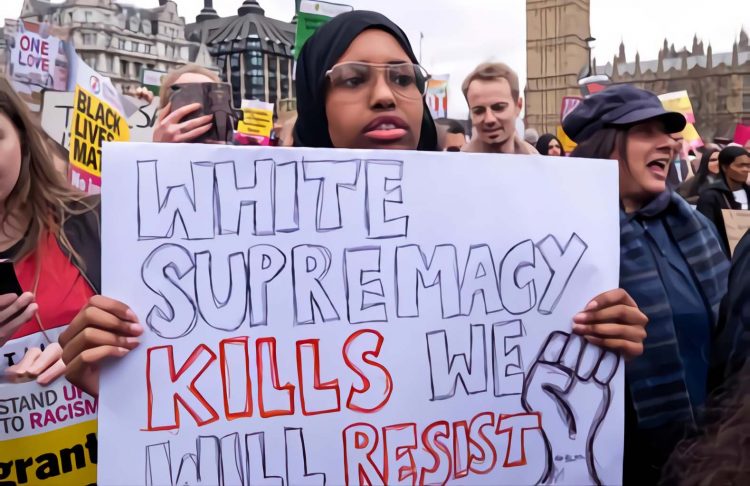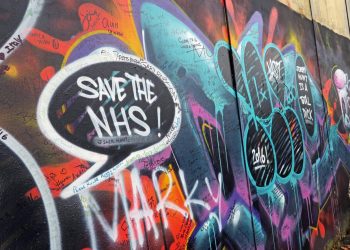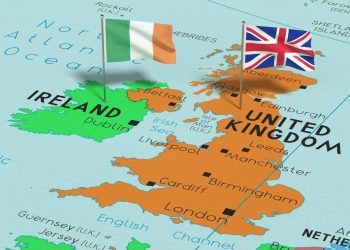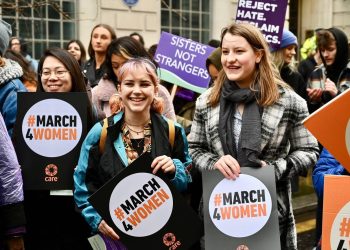According to a new poll released on Saturday, three-quarters of Black Americans say they are worried that they or someone they love will be physically attacked because of their race. Meanwhile, President Joe Biden condemned the “poison” of white supremacy in the “body politic” in the United States
A new Washington Post-Ipsos poll found that 75 percent of Black Americans are worried that they care about will be physically harmed. Two-thirds of those polled said white supremacy is a bigger problem today than five years ago. In comparison, 28 percent said the size of the problem is the same, while five percent said it was a minor problem today.
Seventy percent of respondents said the shooting made them feel sad, while 62 percent said they felt angry. Over half said they felt troubled, 34 percent said they felt afraid, 21 percent said they felt shocked, and 8 percent said surprised.
after a gunman killed ten people at a market in a majority Black neighbourhood of Buffalo, New York. “Hate and fear are being given too much oxygen by those who pretend to love America but don’t understand America,” Biden told a group of victims’ families, local officials, and first responders in Buffalo.
Biden’s remarks were a response to the actions of Payton Gendron, an 18-year-old white male, who police say travelled 320 kilometres (200 miles) from his hometown in rural New York to kill Black people in Buffalo, state’s second-largest city. “These actions we’ve seen in these hate-filled attacks represent the views of a hateful minority. We can’t allow them to distort America,” Biden said, calling the racism that motivated Saturday’s mass shooting “evil”. “What happened here is simple and straightforward: terrorism. Terrorism. Domestic terrorism,” Biden said in a speech during a visit to the city.
For almost two decades since 9/11, white supremacist terrorism has been relegated to a secondary concern in the US and Europe even though it was metastasizing.
This neglect has led to shocking episodes of violence from New Zealand to Norway to South Carolina and has eroded faith in Western democratic institutions. Because white power terrorists’ grievances echo mainstream debates and their violence often exacerbates polarization, their political impact can be inordinately high even if the body count is low.
Many experts believe the white supremacist threat has been a growing phenomenon.
White supremacist violence is not new, but it has become and risen to primary national security threat in the United States in recent years. Notions of racial superiority, hostility toward immigrants and minorities, and the myth of an embattled white majority defending its power have increasingly infiltrated mainstream American political and cultural discourse.
In October 2020, the US Department of Homeland Security (DHS) published its annual threat assessment, identifying racially and ethnically motivated violent extremists, mainly white supremacist extremists, as “the most persistent and lethal threat in the Homeland.”
US government should consider that White supremacy in the United States has existed since before the nation’s founding.
and US history is inextricably tied to violence against people of colour. Violence against Native Americans, including forced removal and military occupations, was a core component of the United States’ formation and territorial expansion. The enslavement of Black people, and inherently violent white supremacist practice, was upheld by legal, societal, religious, and economic justifications. And throughout US history, white supremacy has shaped the legal and normative notions of who could be an American citizen, with exclusionary immigration laws and restrictions on suffrage.
Violent extremists will continue to target individuals or institutions that represent symbols of their grievances and grievances based on political affiliation or perceived policy positions. The domestic situation surrounding the COVID-19 pandemic creates an environment that could accelerate some individuals’ mobilization to targeted violence or radicalization to terrorism.
Right-wing attacks and plots were predominant from 1994 to 1999 and accounted for more than half of all incidents in 2008 and every year since 2011, except 2013. Most right-wing attacks in the 1990s targeted abortion clinics, while most right-wing attacks since 2014 focused on individuals (often targeted because of religion, race, or ethnicity) and religious institutions. Facilities and individuals related to the government and police have also been consistent right-wing targets, particularly for attacks by militia and sovereign citizen groups.
There are three broad types of right-wing terrorist individuals and networks in the United States: white supremacists, anti-government extremists, and Incels.
There are numerous differences between (and even within) these types, such as ideology, capabilities, tactics, and threat level. Adherents also tend to blend elements from each category. But there are some commonalities. Their common aspects are:
- First, terrorists in all of these categories operate under a decentralized model. The threats from these networks come from individuals, not groups.
- Second, these networks operate and organize to a great extent online, challenging law enforcement efforts to identify potential attackers.
- Third, right-wing extremists have adopted some foreign terrorist organization tactics, though al-Qaeda and other groups have also adopted tactics developed by right-wing movements.
But White supremacist networks are highly decentralized. Most believe that whites have their own culture superior to other cultures, are genetically superior to other peoples, and should exert dominance over others. Many white supremacists also adhere, in varying degrees, to the Great Replacement conspiracy.
Many white supremacists also adhere, in varying degrees, to the Great Replacement conspiracy. The conspiracy claims that ethnic and racial minorities are eradicating whites.
Brenton Tarrant, the Christchurch shooter in New Zealand, and Patrick Crusius, the El Paso Walmart shooter, espoused the most radical view of the Great Replacement conspiracy, known as Accelerationism. White supremacist organizations include the Nationalist Socialist Movement, American Nazi Party, and Vanguard America.
Violent White Supremacist Extremists (WSE) are individuals who seek, wholly or in part, through unlawful acts of force or violence, to support their belief in the intellectual and moral superiority of the white race over other races. The mere advocacy of political or social positions, political activism, strong rhetoric, or generalized philosophic embrace of violent tactics may be constitutionally protected activities.
There are five predominant types of White supremacist extremists in the United States could be identified:
- Ku Klux Klan members,
- neo-Nazis,
- racist skinheads,
- Christian Identity adherents, and
- Aryan prison gangs.
They all subscribe to the same general belief that Whites are superior to other races.
Conclusion
In recent years, 2019 was the most lethal year for violent domestic extremism in the United States since the Oklahoma City bombing in 1995. Violent Extremists perpetrated 16 attacks, killing 48, whereas Home Violent Extremists conducted five raids and killed one person. Among Domestic Violent Extremists (DVEs) actors, WSEs ran half of all lethal attacks, resulting in most deaths.
This kind of violence demonstrates that the well-known metaphor used for American society, “Melting Pot”, was a wrong understanding, and White Supremacists vanished and strengthened other prominent external threats to Americans. This threat will get worse with the polarization of the so-called “United” States.





























